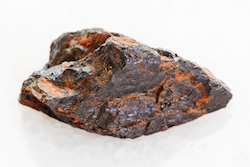Birds of a feather
Animal life on the islands often evolves separately from the same species on the mainland, offering fascinating insight into how they adapt in isolated environments. The EU-funded project 'Evolution in island birds: testing patterns and investigating mechanisms' (Evolution ON Islands) studied the evolutionary mechanisms and adaptations in the bird family. The researchers tested how birds adapted to island environments on a global scale, which involved a joint initiative among three European countries. They found that birds' behaviour, characteristics and reproductive capabilities the world over often evolved in a similar matter on different islands, an intriguing phenomenon referred to as 'island syndrome'. Morphological changes saw bird evolution repeatedly lead to flightlessness, accompanied by changes in feeding habits, body size and bill structure. By studying island specimens in museums, the project was able to build a database of more than 240 species cataloguing size, shape, egg traits, plumage colour and other data. It showed that island species generally have reduced colouration, less fancy patches and duller feathers, hinting at decreased sexual traits and morphology. The project also applied the 'island rule' for mammals on birds. The rule stipulates that generally large animals tend to become smaller on the islands, while the opposite is true as well. The project also found that in temperate island regions (yet not in tropical ones) animals are less fertile, boasting longer developmental periods and paying more attention to the young. Evolution ON Islands then investigated the factors behind the patterns of adaptation observed. It researched the adaptive basis of cooperative breeding in specific bird species, in addition to studying if insular bird species on islands experience lower parasite pressures than their mainland counterparts. Project scientists have published several papers and manuscripts on the subject which have raised some highly interesting facts about the bird world.







